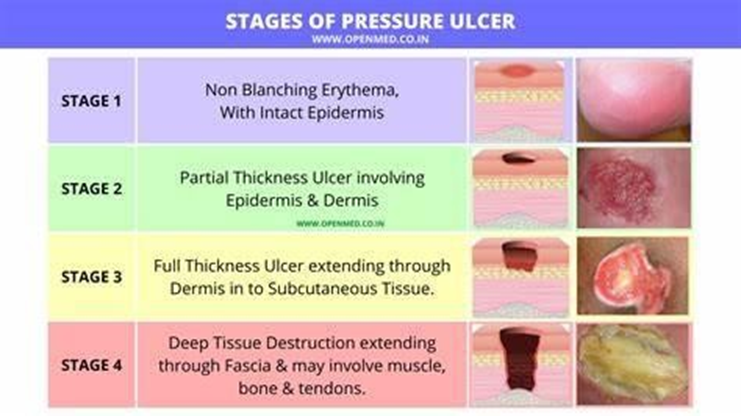The nurse is preparing to administer a feeding to a client with a gastrostomy tube. What should the nurse do before providing this feeding?
Measure vital signs.
Lower the head of the bed.
Verify tube patency.
Assist the client to a prone position.
The Correct Answer is C
C. Before administering a feeding through a gastrostomy tube, it is essential to verify that the tube is patent (open and unobstructed). Tube patency ensures that the feeding formula or medication can flow freely into the stomach or intestines without encountering any blockages or resistance. The nurse should flush the tube with water to check for patency and ensure proper functioning before initiating the feeding.
A. Vital signs are typically assessed for overall health monitoring and to detect any immediate changes in the client's condition. However, they are not specifically required before every feeding via gastrostomy tube unless there are specific concerns about the client's stability.
B. This option is not typically necessary before administering a feeding through a gastrostomy tube. In fact, elevating the head of the bed to at least 30 to 45 degrees is often recommended during and after feeding to minimize the risk of aspiration. This position helps to promote digestion and reduce the likelihood of reflux or regurgitation of the feeding.
D. Assisting the client to a prone (face-down) position is unnecessary and potentially unsafe before administering a feeding through a gastrostomy tube. The recommended position for feeding via gastrostomy tube is typically semi-Fowler's position (elevated head of the bed), which helps prevent aspiration and facilitates digestion.
Nursing Test Bank
Naxlex Comprehensive Predictor Exams
Related Questions
Correct Answer is B
Explanation
B. This finding suggests deep tissue involvement and is characteristic of a Stage IV pressure injury. Stage IV pressure injuries involve full-thickness tissue loss with exposure of underlying structures such as bone, tendon, or muscle. This level of tissue damage requires extensive wound care and management to promote healing.

A. Thick dark eschar indicates necrotic tissue that typically covers the wound. While eschar itself is a characteristic of severe wounds, its presence alone does not define a Stage IV pressure injury. Eschar can be present in various stages of pressure injuries.
C. Partial-thickness loss of dermis typically corresponds to Stage II pressure injuries, where the injury extends into the epidermis and dermis but does not yet involve full-thickness tissue loss. This finding does not indicate a Stage IV pressure injury.
D. This finding is characteristic of a Stage III pressure injury, where the wound extends through the dermis into the subcutaneous tissue layer. In Stage IV pressure injuries, the damage progresses further to involve deeper structures such as muscle and bone, beyond the subcutaneous tissue.
Correct Answer is ["A","B","C","D"]
Explanation
A. Monitoring intake (fluids taken orally or intravenously) and output (urine, vomitus, diarrhea) helps assess fluid balance and hydration status. It is essential in clients with vomiting and diarrhea to prevent dehydration or fluid overload.
B. Vomiting and diarrhea can lead to dehydration and electrolyte imbalances, which may affect the skin and oral mucosa. Providing good mouth care (e.g., oral hygiene, hydration) and skin care (e.g., gentle cleansing, moisturizing) helps maintain comfort and prevent complications such as skin breakdown.
C. This may be appropriate depending on the severity of the client's condition and the healthcare provider's orders. Daily weights help monitor fluid balance and assess for changes in hydration status. However, in acute cases of vomiting and diarrhea, more frequent weights or other assessments of fluid status may be necessary.
D. Assessing the client's level of consciousness is important to monitor for signs of dehydration or electrolyte disturbances, which can affect neurological function. Changes in level of consciousness may indicate worsening dehydration or other complications that require prompt intervention.
E. Loop diuretics are medications used to increase urine output by inhibiting sodium reabsorption in the kidneys. However, they are not indicated for treating vomiting and diarrhea. In fact, administering diuretics could exacerbate fluid and electrolyte imbalances in a client who is already experiencing fluid loss through vomiting and diarrhea
Whether you are a student looking to ace your exams or a practicing nurse seeking to enhance your expertise , our nursing education contents will empower you with the confidence and competence to make a difference in the lives of patients and become a respected leader in the healthcare field.
Visit Naxlex, invest in your future and unlock endless possibilities with our unparalleled nursing education contents today
Report Wrong Answer on the Current Question
Do you disagree with the answer? If yes, what is your expected answer? Explain.
Kindly be descriptive with the issue you are facing.
